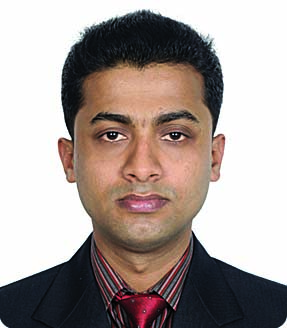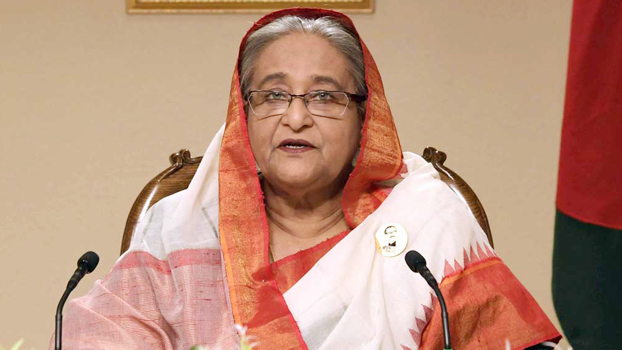Covid-19: Bangladesh’s early steps paying off

When Bangladesh announced to go for general holidays on March 24, the number of coronavirus cases was only 39 and there was no official call for the ‘community transmission’ of the virus.
Still the government has decided to enforce a lockdown closing all schools, businesses and offices. The disease monitoring agency, IEDCR, intensified its efforts to detect and isolate new infections.
After nearly four months of the pandemic, it seems the intervention helped the country to slow down the spread of the virus which experts say was needed to prepare the health facilities.
Hospital beds have been increased with the diagnostic RT-PCR labs. On March 8 when the first three cases were identified, there was only one detection center at the IEDCR. Now it is expanded outside the capital with 70 centers offering tests.
“At this stage, we can say yes to some extent we have been successful and due to early intervention and lockdown we got the advantage,” IEDCR director Prof Meerjady Sabrina Flora told Bangladesh Post on Saturday.
“Our plan was to slow it down because we have seen in many other countries that due to sudden rise and peak of the pandemic there have been so many fatalities,” she said.
“We also had our own challenges (when the first case was identified) that we thought we cannot overcome overnight. So, our plan was to slow it down and take preparations. And that’s why we have been detecting and isolating cases very effectively”.
Every country is grappling with the coronavirus in its own way as the pandemic has caused a massive public health crisis worldwide.
The advanced economics such as European and North American countries suffered heavy losses. Some countries, however, made good progress in fighting the virus in their own way. Bangladesh is no exception.
With 159,679 confirmed cases as of Saturday, Bangladesh is among the top 20 countries in the world when it comes to the number of infections.
But with 1.25 percent death rate, the country is among the list of 50 countries who have the lowest fatality rates.
Densely populated Bangladesh has been finding its own way to fight off the pandemic by making a balance between lives and livelihoods.
“It’s not possible for us to continue lockdown for a long period. Our Prime Minister Sheikh Hasina rightly chose to make a balance between the two. And I’ll say we are successful so far,” Prof Abul Kalam Azad, director general for health services, told Bangladesh Post.
“She (Prime Minister) did not take it as a health issue only. She saw it from both lives and livelihood perspectives and took actions accordingly,” he added.s
The director general also said: “No country could predict what will happen. With our limited capabilities, I think we did it very well. Developed countries who advise us for health, they also could not predict what is coming up.
“Number of patients is not less. But it could be much higher if we did not take steps early. It’s unpredictable,” he said, adding that over the time, coordination has been improved.
The health department recently reviewed all the committees and made nine committees which are being coordinated by the highest body headed by the director general himself.
“This highest-level committee sits every 7pm and takes stock of everything,” he said.
“We make decisions together and implement those together. We fix problems together. So, it’s well coordinated now. Our work and speed of work have been increased,” he said.
“For Bangladesh, it’s not the pandemic that we are dealing with. We are dealing with floods also. Dengue is another cause of concern. So, everything we have to consider in making our policies and strategies. We are not losing attention from anything,” he said.
“We are expanding ICU facilities, high-flow oxygen supply at the district level. We also have to consider the upcoming Eid-Ul-Azha also,” he said, while talking on the challenges of the management.
Liver specialist Prof Mamun Al Mahtab Shwapnil, who is actively working during the pandemic period and offering telemedicine services to the patients, told Bangladesh Post that the low death rate means “we managed it well”.
“Our physicians have been taking care of patients seriously and due to timely use of anticoagulant drugs and antibiotics, I think we could prevent many deaths due to blood clot and secondary infections”.
“Besides the telemedicine services offered by doctors have helped patients to take treatment staying at home, reducing burden on hospitals,” he said.
So far 1,45,86,688 people received healthcare services from hotline mobile numbers and health web portals as the government formed a group of medical professionals to provide emergency health services.
With over 44 percent patients recovered from hospitals, the Covid19 dedicated beds are also empty now.
“Unless we can contain it fully, we cannot say we are successful. But yes, we can say that because of our strategies we could keep the fatalities low. With our limited resources, the way we could do it, it’s a success,” the IEDCR director said.
People have been asked to wear masks while going out for jobs, maintain physical distancing at least 3 feet and wash hands frequently with soap.



